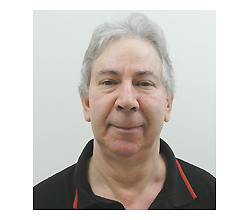
In your view, what are the differences between analog and digital audio in terms of sound quality?
First we have to define what is meant by analog and digital. “Analog” encompasses both audio hardware such as equalizers and compressors, as well as the recording mediums of magnetic tape and vinyl records.
Digital audio refers to both the recording medium and software effects. Analog gear can be very high quality, with distortion and noise low enough to not hear, and a frequency response flat enough to not matter.
Gear that meets these criteria is considered audibly transparent, such that it’s difficult to notice a change in quality after passing through the device.
Digital plug-ins have a slight advantage because their transparency is dictated entirely by the resolution of the math used to perform the needed calculations. Most modern software processes audio data using 32-bit floating point numbers. This is potentially cleaner than any real-world electronic circuit.
Of course, every computer sound card and outboard A/D/A converter has analog input and output sections, and these ultimately limit the fidelity possible. But many converters are audibly transparent. So the real answer is that both analog and digital can have acceptably high fidelity when implemented properly.
Another important factor falls outside the context of “sound quality” – intentional subtle distortion used for effect to add faux clarity to a track or complete mix, or as “glue” to make a mix sound more cohesive. A compressor with both the attack and release times set very fast also adds distortion that is useful in some contexts. These effects can be implemented effectively using either digital or analog technology.
What are the best ways to learn the essential principles of audio?
The best way to learn is by doing. It also helps to have knowledgeable friends, whether in person or a web forum. Of course, the downside of web forums is having to sort through many disparate opinions to separate fact from belief. But anyone who has basic audio software can easily try things for himself or herself.
Often I’ll see someone in an audio forum ask, for example, if they should compress before EQ or vice versa, or use EQ boost rather than cut – even though it would be trivial to just try it to find out for yourself firsthand!
If a tree falls in the forest and no one is there to hear it, does it make a sound?
Yes!
For a much more detailed and interesting answer to that last question, be sure to check out The Audio Expert, published by Focal Press (ISBN: 9780240821009) and available here.
And, go here to read an excerpt chapter entitled Audio Fidelity, Measurements, And Myths – Part 1, provided exclusively to PSW.
Keith Clark is editor in chief of ProSoundWeb and Live Sound International.
